| What do you want to know about cotton? | ||||||||||||||||||||||||||||||||||||||||||||||||||||||||||||||||||||||||||||||
Cotton plants
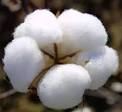
 Cotton Textiles & Fabrics.  Cotton Dresses 
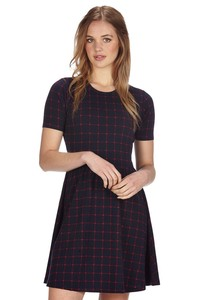



| ||||||||||||||||||||||||||||||||||||||||||||||||||||||||||||||||||||||||||||||
|
What is Cotton? What is it cotton made of? What are uses of cotton? What is the history of Cotton? Where is cotton grown? How cotton grows? What is cotton used for? What one bale of cotton can make? | ||||||||||||||||||||||||||||||||||||||||||||||||||||||||||||||||||||||||||||||
| Cotton Glossary | ||||||||||||||||||||||||||||||||||||||||||||||||||||||||||||||||||||||||||||||
| Cotton in the Classroom | ||||||||||||||||||||||||||||||||||||||||||||||||||||||||||||||||||||||||||||||
| Cotton Library | ||||||||||||||||||||||||||||||||||||||||||||||||||||||||||||||||||||||||||||||
| Cotton Store | ||||||||||||||||||||||||||||||||||||||||||||||||||||||||||||||||||||||||||||||
Cotton Yarn 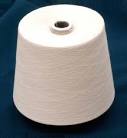
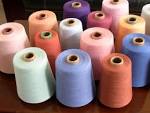
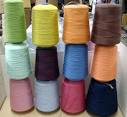
Yarn consists of several strands of material twisted together. Each strand is, in turn, made of fibers, all shorter than the piece of yarn that they form. These short fibers are spun into longer filaments to make the yarn. Long continuous strands may only require additional twisting to make them into yarns. Sometimes they are put through an additional process called texturing. The characteristics of spun yarn depend, in part, on the amount of twist given to the fibers during spinning. A fairly high degree of twist produces strong yarn; a low twist produces softer, more lustrous yarn; and a very tight twist produces crepe yarn. Yarns are also classified by their number of parts. A single yarn is made from a group of filament or staple fibers twisted together. Ply yarns are made by twisting two or more single yarns. Cord yarns are made by twisting together two or more ply yarns. Yarn is a long continuous length of interlocked fibres, suitable for use in the production of textiles, sewing, crocheting, knitting, weaving, embroidery, and ropemaking. Thread is a type of yarn intended for sewing by hand or machine. Modern manufactured sewing threads may be finished with wax or other lubricants to withstand the stresses involved in sewing. Embroidery threads are yarns specifically designed for hand or machine embroidery. S- and Z-twist yarn
| ||||||||||||||||||||||||||||||||||||||||||||||||||||||||||||||||||||||||||||||
| Events & News | |||||||||||||
| Growing cotton at home or indoors | |||||||||||||
| History of Cotton | |||||||||||||
| History of Cotton Gin | |||||||||||||
| How to grow Cotton | |||||||||||||
| Labeling and Advertising Cotton Products | |||||||||||||
| Organic Cotton Socks | |||||||||||||
| Spinning Tools | |||||||||||||
| Testimonials | |||||||||||||
| The Cotton Plant | |||||||||||||
| The Cotton Story | |||||||||||||
| Uses of Cotton | |||||||||||||
|
What one bale of cotton can make?
215 Jeans 249 Bed Sheets 690 Terry Bath Towels 765 Men's Dress Shirts 1,217 Men's T-Shirts 1,256 Pillowcases 3,085 Diapers 4,321 Mid-Calf Socks 21,960 Women's Handkerchiefs It is based on the conversion of three types of fiber into yarn, then fabric, then textiles. Cotton is a shrubby plant that is a member of the Mallow family. Its name refers to the cream-colored fluffy fibers surrounding small cottonseeds called a boll. The small, sticky seeds must be separated from the wool in order to process the cotton for spinning and weaving. De-seeded cotton is cleaned, carded (fibers aligned), spun, and woven into a fabric that is also referred to as cotton. Cotton is easily spun into yarn as the cotton fibers flatten, twist, and naturally interlock for spinning. Cotton fabric alone accounts for fully half of the fiber worn in the world. It is a comfortable choice for warm climates in that it easily absorbs skin moisture. Most of the cotton cultivated in the United States is a short-staple cotton that grows in the American South. Cotton is planted annually by using the seeds found within the downy wool. The states that primarily cultivate cotton are located in the "Cotton Belt," which runs east and west and includes parts of California, Alabama, Arkansas, Georgia, Arizona, Louisiana, Mississippi, Missouri, New Mexico, North Carolina, Oklahoma, South Carolina, Tennessee, and Texas, which alone produces nearly five million bales. Together, these states produce approximately 16 million bales a year, second only to China. Business revenue generated by cotton today is approximately $122.4 billion—the greatest revenue of any United States crop. The cotton plant is a source for many important products other than fabric. Among the most important is cottonseed, which is pressed for cottonseed oil that is used in commercial products such as salad oils and snack foods, cosmetics, soap, candles, detergents, and paint. The hulls and meal are used for animal feed. Cotton is also a source for cellulose products, fertilizer, fuel, automobile tire cord, pressed paper, and cardboard. HistoryCotton was used for clothing in present-day Peru and Mexico perhaps as long as 5,000 years ago. Also, cotton was grown, spun, and woven in ancient ________ around 3000 B.C. Cotton is not native to Western ______. Around A.D. 800, Arabic ______ likely introduced cotton to Spaniards. By the fourteenth century, Mediterranean farmers were cultivating the cotton plant and shipping the fiber to the Netherlands for spinning and weaving. British innovations in the late 1700s include water-powered spinning machinery, a monumental improvement over hand-spinning. An American named Samuel Slater, who worked with British machinery, memorized the plans for a machine spinner and returned to Rhode Island to set up Slater Mill, the first American textile mill to utilize machine spinners. This mill represents the beginning of the U.S. Industrial Revolution, built on the mechanism of the cotton industry. Two developments spurred the cultivation of American cotton: cotton spinners and the cotton gin. The cotton gin, developed by Eli Whitney in 1793, easily removed tenacious cottonseeds. Southern plantation owners began planting cotton as a result of these innovations, using enslaved labor for harvesting the cotton. Vigorous cotton cultivation in the South using enslaved labor is considered one reason for friction between North and South that led to the Civil War. Southern cotton was shipped to New England mills in huge quantities. As a result of machine spinning, weaving, and printing, Americans could cheaply _______ calico and it became universally worn. However, labor costs were significant in New England. Mill owners found ways to reduce those costs, first by employing women and immigrants who were often paid poorly, then by employing young children in the factories. After oppressive labor practices were largely halted, many factories moved to the South where labor was cheaper. (Unionizing efforts affected the profits of those mills.) Today, a fair amount of cotton is woven outside the United States where labor is less costly. Polyester, a synthetic, is often used along with cotton, but has little chance of supplanting the natural fiber. Raw MaterialsThe materials required to take cotton bolls to spun cotton include cottonseeds for planting; pesticides, such as insecticides, fungicides, and herbicides, to battle disease and harmful insects; and fertilizers to enrich the soil. There are agricultural requirements for growing cotton in the United States. Cotton has a long growing season (it can be as long as seven months) so it is best to plant cotton early—February in Texas but as late as June in northern cotton-growing states such as Missouri. Cotton should not be planted before the sun has warmed the soil. It performs best in well-drained, crumbly soils that can hold moisture. It can be grown between latitudes of 30° north and 30° south. Good cotton crops require a long, sunny growing season with at least 160 frost-free days and high moisture levels resulting from rainfall or irrigation during the growing season. However, too much rain during harvest or strong winds during picking can damage the open bolls and load the fiber with too much water, which can ruin the cotton in storage. Generally, a cotton farmer must farm about 2,000 acres (20,000 hectares) if the operation is to be economically viable. On average, an acre will produce about 1.5 bales of cotton, or about 750 lb (340 kg). The Production Process
Quality ControlCotton growing is a long, involved process and growers must understand the requirements of the plant and keep vigilant lookout for potential problems. Pests must be managed in order to yield high-quality crops; however, growers must use chemicals very carefully in order to prevent damage to the environment. Defoliants are often used to maximize yield and control fiber color. Farmers must carefully monitor moisture levels at harvesting so bales will not be ruined by excess water during storage. Soil tests are imperative, since too much nitrogen in the soil may attract certain pests to the cotton. Expensive equipment such as cotton planters and harvesters must be carefully maintained. Mechanical planters must be set carefully to deposit seed at the right depth, and gauge wheels and shoes must be corrected to plant rows at the requisite spot. Similarly, improperly adjusted machinery spindles on harvesting machines will leave cotton on the spindle, lowering quality of the cotton and harvesting efficiency. A well-adjusted picker minimizes the amount of trash taken up, rendering cleaner cotton. Byproducts/WasteThere is much discussion regarding the amount of chemicals used in cotton cultivation. Currently, it is estimated that growers use, on average, 5.3 oz (151 g) of chemicals to produce one pound of processed cotton. Cotton cultivation is responsible for 25% of all chemical pesticides used on American crops. Unfortunately, cotton attracts many pests (most notably the boll weevil) and is prone to a number of rots and spotting, and chemicals are used to keep these under control. There are concerns about wildlife poisoning and poisons that remain in the soil long after cotton is no longer grown (although no heavy metals are used in the chemicals). As a result, some farmers have turned to organic cotton growing. Organic farming utilizes biological control to rid cotton of pests and alters planting patterns in specific ways to reduce fungicide use. While this method of cultivation is possible, an organically grown crop generally yields less usable cotton. This means an organic farmer must ______, plant, and harvest more acreage to yield enough processed cotton to make the crop lucrative, or reduce costs in other ways to turn a profit. Increasingly, state university extension services are working with cotton farmers to reduce chemical use by employing certain aspects of biological control in order to reduce toxins that remain in the land and flow into water systems. Cotton Glossary
|
|||||||||||||
|
•Almost all parts of the cotton plant are used in some way including the lint, cottonseed, linters, stalks and seed hulls •The fibre from one 227kg cotton bale can produce 215 pairs of jeans, 250 single bed sheets, 1,200 t-shirts, 2,100 pairs of boxer shorts, 3,000 nappies, 4,300 pairs of socks or 680,000 cotton balls Products Made from Cotton Lint/Fibre •Cotton lint is spun then woven or knitted into fabrics such as velvet, coruroy, chambray, velour, jersey and flannel •About 60% of the world’s total cotton harvest is used to make clothing, with the rest used in home furnishings and industrial products •Well known cotton products include denim jeans, socks, towels, t-shirts, bed sheets and underwear •More unusual uses of cotton fibre include tents, car tire cord, fishnets and book binding Products Made from Cotton Seed •Over half the weight of unprocessed cotton (seed cotton) is made up of seed •The most common uses of cottonseed are oil for cooking and feed for livestock. Cotton seed is pressed to make cottonseed oil. Cottonseed can be made into a meal and is a popular feed for cattle and livestock as it’s a great source of energy •Cottonseed oil can also be used in a range of industrial products such as soap, margarine, emulsifiers, cosmetics, pharmaceuticals, rubber, paint, water proofing and candles •Cottonseed oil is cholesterol free, high in poly-unsaturated fats and contains high levels of anti oxidents (vitamin E) that contribute to its long shelf life Products Made from Cotton Linters •Cotton linters are fine, very short fibres that remain on the cottonseed after ginning. They are curly fibres typically less than 3mm long •Linters are used in the manufacture of paper (such as archival paper and bank notes) and as a raw material in the manufacture of cellulose plastics •Linters are commonly used for medical supplies such as bandages, cotton buds, cotton balls and x-rays |
|
Cotton is a perennial plant but mostly grown as an annual as it cannot withstand frost. Cotton needs a lot of sunshine, warm conditions and 4-5 months of frost-free temperatures to mature and produce cotton. Not all regions are lucky to have long warm summers, cotton can be grown indoors too. You can not only greatly extend your growing season for the cotton plants, but you can also better protect the plants from damaging winds and heavy rains. 1. Plant 2-3 cotton seeds in a 4 inch wide peat pots with soil and compost. Plant the seeds about 1/2 to 1 inch deep into the peat pots. 2. Place the peat pots in a sunny location near the window. Keep the seeds warmed to about 65 to 68 degrees Fahrenheit. Water the peat pots lightly every other day to keep the seeds slightly damp at all times. 3. Thin out the weaker seedlings in each peat pot after the cotton seeds germinate and begin to sprout. Allow one strong, healthy cotton seedling to remain in each pot. 4. When the cotton plants outgrow the peat pots, cut the bottom of the peat pots and transfer them into 12 inch diameter planter pots. Fill the planter pots with a loam-based potting compost mixture, not one that’s peat-based. 5. Place the cotton plants outdoors in full sun during days when temperatures are well above 65 degrees Fahrenheit and there’s no heavy rain. Bring the plants indoors and place them in a sunny window when temperatures are cooler. 6. Feed the cotton plants once each week with a liquid plant fertilizer that’s high in Potash (Potassium) or use a Tomato Food or Rose Food available on the market. Follow the fertilizer dosage instructions on the label. 7. Cotton does not like too much water. Water the seedling and mature cotton plants two or three times per week to soak the soil around the roots, allowing the top layer of potting mixture to dry slightly between waterings. 8. Large yellow flowers appear in 45 days from sowing. Flowers wither off and form bolls which crack open to form fluffy cotton in about 130-150 days from sowing. Growing cotton in your garden Cotton is a perennial plant but mostly grown as an annual as it cannot withstand frost. Cotton needs a lot of sunshine, warm conditions and 4-5 months of frost-free temperatures to mature and produce cotton. Not all regions are lucky to have long warm summers, cotton can be grown indoors too. You can not only greatly extend your growing season for the cotton plants, but you can also better protect the plants from damaging winds and heavy rains. 1. Work the soil to 3-4 inches deep to eliminate weeds. 2. Incorporate compost into the soil to provide nutrients for the cotton plant. 3. After all danger of frost has passed and soil temperatures have warmed up to 60 degrees, its time to plant cotton seeds. 4. Plant cotton seeds in moist soil, in groups of three seeds, 1 inch deep and 6 inches apart. 5. Cotton seeds germinate in 7 to 10 days if soil temperatures are above 60 degrees Fahrenheit (16 degrees Celsius). 6. Cotton does not like a lot of water. So water once in about 7 days. Water more frequently in summer months if leaves show signs of drying. 7. Feed the cotton plants with a granular or liquid plant fertilizer like a Rose Food available on the market. Follow the fertilizer dosage instructions on the label. 8. Large yellow flowers appear in 45 days from sowing. Flowers wither off and form bolls. 9. Stop watering 16-18 weeks from sowing when bolls have been formed, so that the plant begins to dry and shed their leaves, and the bolls will split open to form a fluffy ball |
| |||||||||||||||||||||||||||||||||||


